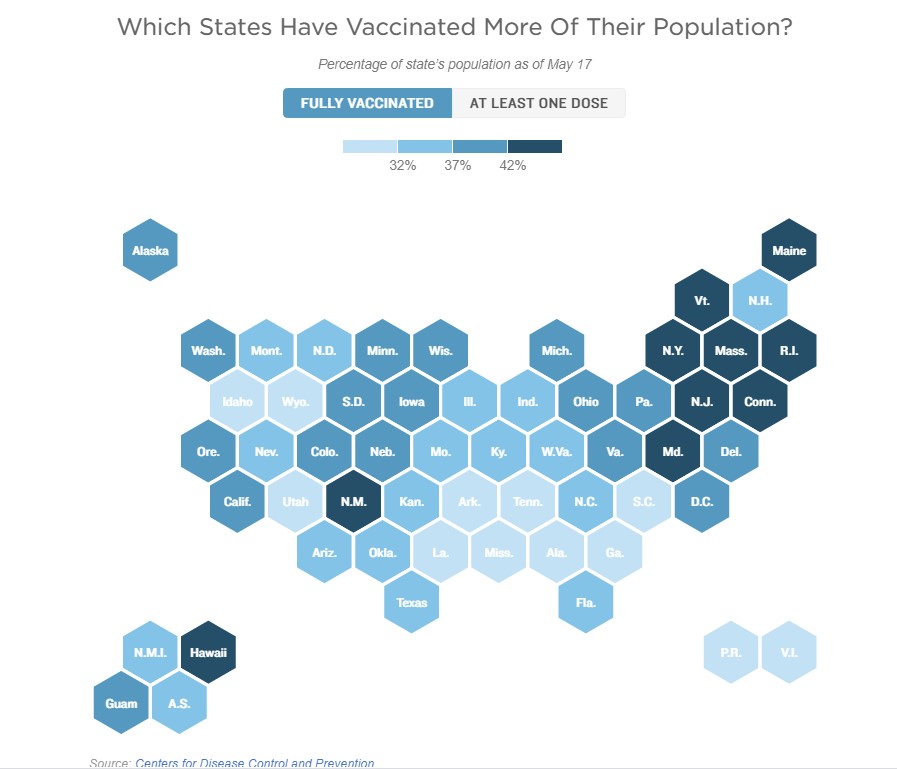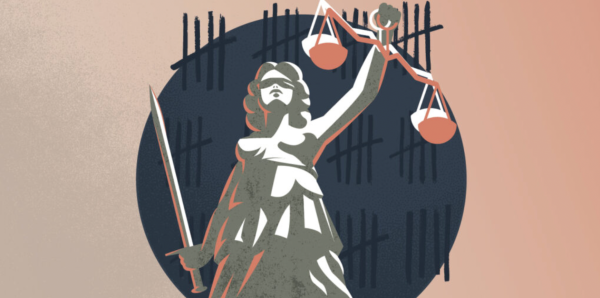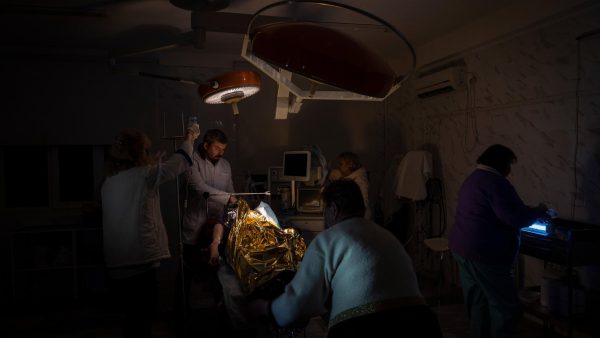COVID-19 Vaccine: Distribution and Facts
May 25, 2021
As of Wednesday May 5, 2021, 31% of the US population had been vaccinated and 44% have received at least one shot. And as of April 19th, the final three states – Vermont, New Jersey, and Hawaii – have approved the vaccine for everybody 16+, which is a huge portion of the population. In other good news, the U.S. Food and Drug Administration recently approved the Pfizer vaccine for 12-15 year olds. Ever since the vaccine came out, the CDC and FDA have been approving phases for the distribution to make sure that people at a higher risk of COVID-19 get it.
According to the CDC, the Advisory Committee of Immunization Practices (ACIP) recommended that the vaccine be distributed to health care personnel and long term facility residents as early as December 1st: a phase known as 1a. Then on December 11, the FDA issued an emergency use authorization for the Pfizer vaccine for people 16 years or older and two days later, the ACIP recommended the use of Pfizer to prevent the coronavirus infection. Phase 1b allows people 75 years old or an essential non health care worker to get the vaccine. The next phase, 1c, included all people ages 65-74, anybody from ages 16-64 with medical problems, and any essential worker not included in phase 1b. Phase two includes everybody 16 and up who did not already qualify for the vaccine in an earlier phase,and now we are at the next stage where 12-15 year olds can get vaccinated. However, different states met these guidelines at different times because states, by law, do now have to follow regulations set by the CDC.
When it comes to international policies, about nine percent of the world as of May 13, 2021 has gotten at least one shot of the vaccine. This includes most countries in North and South America, and Europe, as well as Mongolia, Bhutan, and the United Arab Emirates. These are just the countries that are over 10% vaccinated by some form of the covid vaccine. Some countries, like those in Eurasia and Africa have around 1-5%.
It’s important to note that this is a new type of vaccine called the mRNA vaccine or the ribonucleic acid vaccine. A lot of times, the actual disease is inserted into your immune system when getting a vaccine and although it’s not supposed to activate and make you sick, it can. In fact, according to the CDC, some of those vaccines include the following: measles, mumps, rubella, and chickenpox. However, the COVID-19 vaccine works differently. The shot is injected into your upper arm muscle and in that vaccine is a spike protein. Spike proteins are what allow the vaccine to attach and get inside of the host cell so the virus can live and infect the host. The unique characteristic of this vaccine is that only the instructions for the spike are injected into your body, so your cell will then take the protein and make a copy of it, and the original will then be destroyed. When this happens, your cells know that this protein is not supposed to be here so it starts creating ways to fight off that protein. Long story short, once your cells learn how to fight this protein, they will be ready to fight the protein on the actual virus, and without that protein, the virus then can’t infect you. This poses fewer risks than other vaccines because the protein itself cannot infect you, so by just injecting the protein, your body can make the necessary antibodies without people getting extremely sick
Still, people have concerns with the vaccine and many people are opting not to get it. The goal of the CDC and government is to get at least 80% of the population vaccinated as soon as possible. This vaccine means more than just finally opening up the world again, but it is also leading into a new and probably safer way of getting vaccinated for many viruses. For now though, let’s hope that this vaccine works; I don’t know about you, but I miss the world.
Center for Disease Control. (2018, July). Understanding How Vaccines Work. Provider Resources for Vaccine Conversations with Parents. https://www.cdc.gov/vaccines/hcp/conversations/downloads/vacsafe-understand-color-office.pdf.
Centers for Disease Control and Prevention. (2021, March 4). Understanding mRNA COVID-19 Vaccines. Centers for Disease Control and Prevention. https://www.cdc.gov/coronavirus/2019-ncov/vaccines/different-vaccines/mrna.html.
Centers for Disease Control and Prevention. (2021, May 14). How CDC Is Making COVID-19 Vaccine Recommendations. Centers for Disease Control and Prevention. https://www.cdc.gov/coronavirus/2019-ncov/vaccines/recommendations-process.html.
Dooling, K., & Marin, M. (2020, December 31). The Advisory Committee on Immunization Practices’ Updated Interim Recommendation for Allocation of COVID-19 Vaccine – United States, December 2020. Centers for Disease Control and Prevention. https://www.cdc.gov/mmwr/volumes/69/wr/mm695152e2.html.
New York Times Staff. (2021, March 26). Who Can Get the Vaccine in Your State? The New York Times. https://www.nytimes.com/interactive/2021/us/covid-19-vaccine-eligibility.html.
Ritchie, H. (2021, May 14). Coronavirus (COVID-19) Vaccinations – Statistics and Research. Our World in Data. https://ourworldindata.org/covid-vaccinations?country=OWID_WRL.












